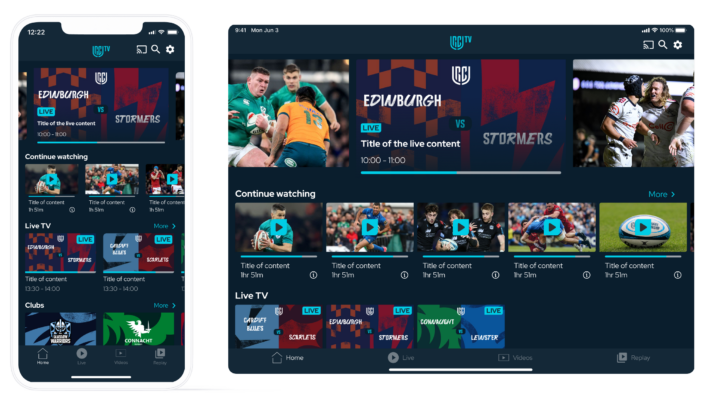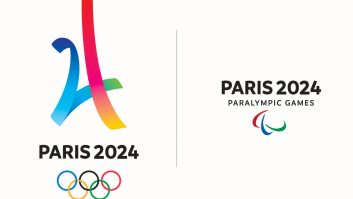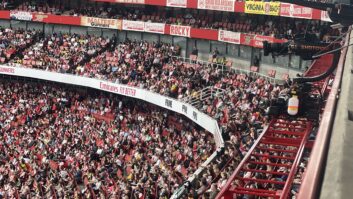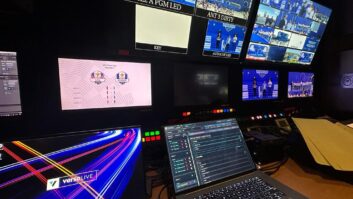
For as long as live broadcasting has existed, the acquisition and distribution of live sports has sat at, or close to, the peak of the content market. Taking a look at the success of Sky in the UK, it has been driven n no small part its acquisition of sports rights, helping lead to the establishment of the Premier League. But over the past decade, the market has evolved alongside the development of live sports streaming. There are, however, challenges in creating these services, challenges that need to be met, both from technical and relationship perspectives, in order to maximise the fan experience and therefore monetisation.
Simplestream has been active in the sports market since 2014, when it started working with pay-TV channel, Racing TV. It initially supported backend workflows to enable simulcasts of the channel for distribution across digital platforms, but has since evolved into a system that clips and tags over 5,000 horse races a year.
In the past, sports OTT was limited to broadcasters complementing their existing broadcast licensing strategy. However, about five years ago we noticed a shift in the market whereby federations/rights holders were looking to take more control, restoring their direct relationship with and relevance to fans. Ultimately, there was a demand in the market that we could see wasn’t being properly satisfied. Sports want and need to be seen and securing broadcast deals in each market takes time. And, of course, in some countries, such as the UK, certain sports dominate the national narrative and viewership – football being the case in point here – leaving federations/rights holders needing to find their audience. OTT solutions give federations and rights holders the opportunity to take matters into their own hands, although, once again, there are challenges that must be faced.
What we are discussing is live sports streaming, which requires a level of timing and service quality that can only be provided through a dedicated solution tailored specifically to fit. Federations need to provide a true television experience for fans, without overengineering match centres or introducing overly elaborate fantasy experiences that can detract from the core viewing experience. While interactive features can enhance engagement, there’s a risk of overshadowing the essence of the sport itself. The need is to maximise live video content – its overall technical and onscreen quality – to drive monetisation. Any solution must also be able to support multiple payment models: PPV, subscriptions and ad-funded, or a blend of all of the above. We have seen a wider move towards ad-funded models and it will be interesting to see how this evolves in sport. We are also witnessing the rise of non-exclusive rights models, meaning federations are starting to shift away from exclusive licensing and looking for more exposure through windowing or non-exclusive deals.

The first challenge is simple: makes sure it works. A broadcaster or streaming service might have the fanciest platform in the world, but if it doesn’t work that’s all people will remember. Getting the basics right is fundamental to success, particularly in the highly competitive sports market.
That all sounds fairly obvious and reasonably simple. But it isn’t. Fans are passionate about their sports. It is vital for any solution to ensure both the technical infrastructure and the teams of people are in place to not only handle day-to-day requirements, but to react and intervene when necessary, making sure feeds are received and servers optimised for the amount of traffic being handled. Fans expect the service to work, as they should, without necessarily realising that behind the scenes, huge investments into process, pre-event checklist and testing make sure that nothing goes wrong.
So, obviously live streaming and the ability to take a payment must be supported, but there are also requirements such as being able to cast to a big screen, or watching a video offline by downloading. And then there is the issue of being able to supply this content across as many platforms and devices as possible, which requires a lot of integration and testing work. It is also essential to make any platform integrate well with infrastructure that may already be in place, which requires a modular technological approach. Lastly, being able to provide a comprehensive range of analytical tools is a key, real-world benefit when it comes to driving monetisation.
In order to fully address this market, we sat down at the end of 2022/beginning of 2023 and considered the major challenges. One thing immediately stood out: there was a huge gap in the market in which some federations pay a broadcast specialist to manage their broadcast workflows and also a digital agency to manage their digital workflows – literally doubling their costs and efforts. It doesn’t have to be this way. Federations are paying too much. If a solution could help them reduce costs while improving the quality of the service for fans, it would be a win-win all round.
This is why, as part of our Sports Video Platform, we established a relationship with Globecast. Globecast is a broadcast specialist with decades of experience in moving high value content around. By partnering, we are able to monitor our events for 365 days of the year, out of hours and at weekends, with a comprehensive MCR environment. Globecast handles the content acquisition and the all-important managed services element, allowing each party to concentrate on what they do best and deliver on core capabilities.
Steve MacMurray, digital media development manager at Globecast, says, “Maximising strengths in turn maximises the ROI, which is a function of high performance. What’s key is structuring a properly integrated workflow that ensures maximum quality and that is robust enough to easily deal with any unexpected issues. The service needs to be seamless. From an SLA perspective, clients also benefit from a clearly defined point of escalation for whenever they need help.”
By partnering with Globecast, and training everyone on the tools we’ve built, we can now service any sports federation/rights holder in any time zone. Nothing is left to chance, and by having pre-event checklists, which are religiously run through every week, if a part of the system is not configured correctly, it is identified.
As mentioned above, when putting such huge resources into developing this solution, it was vital to maximise the number of OTT platforms we can reach. This, with the growth of connected TVs and the fragmentation of devices this ecosystem is across, means we have put an unbelievable amount of effort into ensuring this is device-agnostic.
Two customers are already benefitting from all this work. We won’t go into full detail here as you can read about each example via links to our website. In summary, The Gaelic Athletic Association (GAA) – Ireland’s largest sporting organisation – and RTÉ chose our Sports Video Platform to revamp its existing set of OTT applications, called GAAGO. The solution provides the GAAGO ecosystem with a fully managed, end-to-end offering that goes from live stream ingestion to distribution across multiple platforms.
We were also recently selected by URC TV (United Rugby Championship) to power its new offering and new applications for Android and iOS, distributed globally. URC TV is a global OTT sports streaming service created as a partnership initiative between the United Rugby Championship and RTÉ.
The sports market is undoubtedly in a time of flux, with models and consumption habits constantly evolving. This means we have to keep our finger on the pulse of the market and adapt our offering and feature set to best service the needs of the sports market now.






